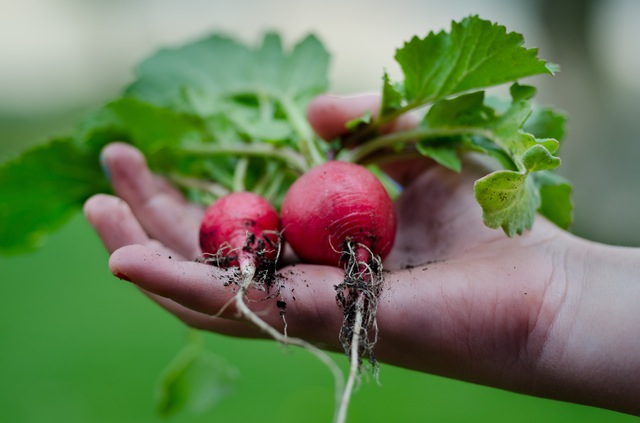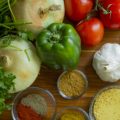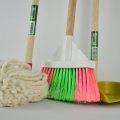
Today’s post is a guest post from fellow blogger Ann, who owns the Sumo Gardener blog. Enjoy!
How to Improve Garden Cultivation
We always want to maximize the crops we harvest after a season of hard work. Our goal as gardeners is to produce sustainable food for our own consumption while maximizing our use of land and minimizing waste and losses. However, gardening should not only be focused on taking care of the crops that we will harvest at the end of the planting season.
One of the most important steps in determining your planting season’s success is usually the first step that you have to do: land cultivation. Today we’ll talk about five different ways that you can improve land cultivation in your garden, no matter how big or small it is.
1. Ensure That Your Soil is Conducive for Planting Crops
Before you start cultivating your land, it is important to check first if your soil is conducive for growing your crops. A lot of new gardeners fail to check this, and in the end, suffer the consequences in the form of a bad harvest.
There are a lot of factors to consider in order for your soil to be deemed as a good medium for plant cultivation. However, perhaps the most important factor to consider is Soil pH.
Most plants prefer neutral (pH level 7) soils. However, a little acidity or alkalinity won’t hurt. If you want to make your soil more acidic, it is best to add sulfur or aluminum sulfate. Adding agricultural lime, on the other hand, makes your soil more basic.
Most state universities will analyze your garden soil for a small fee and send you instructions on how to improve its quality.
Here’s a link to a great post about testing your soil without a kit: http://preparednessmama.com/testing-your-soil-ph-without-a-kit/
And here are some books that will show you how to repair your soil and make it thrive.
Recommended Reading: How to Improve Soil Condition in Your Garden
Recommended Reading: How to Grow More Vegetables, Eighth Edition: (and Fruits, Nuts, Berries, Grains, and Other Crops) Than You Ever Thought Possible on Less Land Than You … (And Fruits, Nuts, Berries, Grains,)
2. Know When to Start Tilling the Soil
Tilling is the process of preparing the soil prior to planting by loosening it, thereby improving its water absorption and aerating it. Tilling also removes the weeds present in the soil as part of the process so in essence, tilling the soil not only prepares the land for planting but also removes unwanted materials from it.
Recommended Reading: Carrots Love Tomatoes: Secrets of Companion Planting for Successful Gardening
The best time to till the soil is when it is warm enough to be tilled, but is hydrated enough as to not get dry after the process. Tilling the soil will make it drier afterward, so a well-hydrated soil will compensate for it. It is also advisable to apply fertilizer after tilling, as the process removes natural fertilizers from the soil.
3. Use Mechanical Tillers to Cultivate the Land
While manual tilling by means of digging, raking, and other related processes are acceptable, they are not necessarily efficient and effective. Manual tilling tends to be uneven due to human error, as opposed to mechanical tilling which is evenly distributed. Uneven soil will result in some crops having more nutrients than others, and will definitely affect the yield.
A lot of gardeners are opposed to using mechanical tillers for their garden because their land has a small area, and thus doesn’t require the use of machines in order to cultivate it. However, there are small tillers now available for use. You will definitely save a lot of time and energy in tilling your soil, while still being practical in terms of the cost that you need to add in order to cultivate your land.
4. Make Sure That Crops are Evenly Spaced
Another advantage of using a mechanical tiller is that it makes the spacing between crops more optimized. Having an evenly spaced bed has a lot of advantages, the most important being the reduction of disease spreading within the crops.
Rototillers are the most popular tool for tilling the garden as they provide effective results, they are easy to use, and they are cost-efficient. These tillers are not only used to create your bed, but can also remove weeds, level walkways, and more. All in all, mechanical tillers are a great addition for maximizing your gardening efficiency.
5. Plant Different Types of Crops in Your Soil
While it is good to plant just one type of crop in a particular bed, it is actually more beneficial to plant different types of crops. Thus, it is better to have a number of beds and plant different types of crops in each.
The primary reasons why having different types of crops is advantageous is because of the different types of nutrients that they carry. After harvest, the crops that you may not get will eventually wilt and become fertilizer to the soil. Since there are a lot of crops present in the soil, the fertilizer too will be more diverse. This, in turn, will make the soil healthier and more conducive to future planting.
My favorite canning/preserving book: EASY. Anyone can use this! Ball Complete Book of Home Preserving
In order to have a great planting season, you need to have a good foundation for your crops. This foundation comes in the form of a good soil, which you can easily create through proper land cultivation. These are just some of the best practices that you can apply to your garden next planting season. If you have more to share, please comment below!












Great information! I have mostly raised beds, so we don’t use a tiller, just a shovel and pitchfork! Last year, I used crimson clover as a cover crop in the fall after harvest – this really helped improve the soil!
I love raised beds, mostly because they look so pretty in the yard. 🙂
I have another funny one. If you spit a seed into your mom’s flower bed, for some reason it causes the seed to really take to the soil and grow into a big beautiful crop. My brothers and I did this with watermelon and it worked beautifully
LOL, that is such a hoot!!! Please don’t show my kids this comment. 🙂
We will be tilling our garden plot here soon. It will be the first time this spot will have been tilled (previously a hayfield) so it will be interesting to see what we can grow. We want to do some “lasagna gardening” to help buildup the soil.
Smart move, Josh. It’ll be interesting to see how the garden yields. Our first crop here was fair, our second was “WOW!”. 🙂
I just planted a bunch of seeds yesterday, getting ready for “fall” – It’s still 90’s here… I found a great planting schedule table for Houston that really helped get me out of the ingrained KY planting timetables.
We have raised beds so I just did minor weeding and turned them over prior to planting. I was able to add almost 10 cu ft of compost I’d been cultivating all summer though. Excited to see how this round goes now that I’ve got fencing to keep our greyhound from destroying everything this season. 🙂
It must be nice to be able to garden in the winter!!! Funny about the greyhound – I’ve heard they’re a little hyper, but they’re SO darn cute!
Hi Laurie,
This is my first visit to your blog.
Is there a good DIY kit for measuring soil pH that you would recommend?
I live in Texas where the soil is very clayey.
–Michael
Hi Michael – welcome! Glad to have you here. 🙂 I’ve added some links that might help you into the post. Let me know how it turns out! I know the clay-based soil can be a problem down there. Other TX readers, your thoughts?
Thank you, Laurie!
Gladly! Thanks for visiting. 🙂
Laurie, thanks for sharing these tips about gardening. I grow my own veggies and I can use these tips to produce healthier and more veggies. Happy planting!
Glad you found the article helpful, Jayson!
Good stuff, Laurie! We occasionally will kick around the idea of a garden, but ultimately just revert back to our city folk ways of buying all our veggies. :/
LOL, we’ll convert you, DB40, don’t worry. 🙂
Nice post mate! Very useful information. I’m planning to start a farm too, I hope this will be helpful for me.
Glad you like it!! Best of luck to you as you plan for your farm!